#NYULibraries
Explore tagged Tumblr posts
Text
Surveying Spain: Working with Spanish Civil War Posters at NYU Libraries
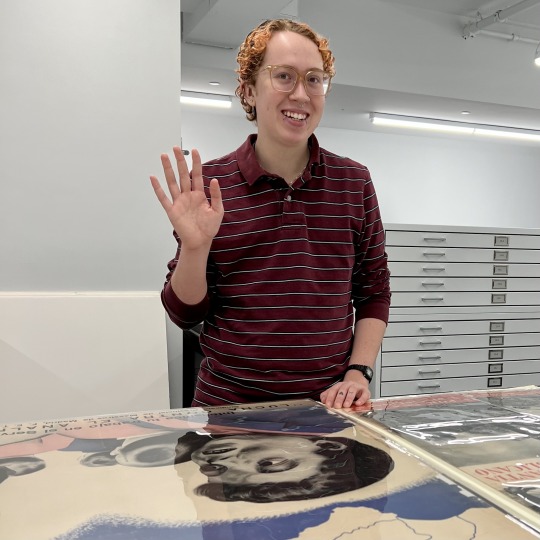
Hi, my name is Mia Lindenburg. I am a graduate student undergoing NYU’s Dual Degree program, where I will get an MA in literature and an MLIS. This semester, I have been working with NYU’s Barbara Goldsmith Preservation & Conservation Department, mentored by Lindsey Tyne (Conservation Librarian), Laura McCann (Director of Preservation), Weatherly Stephan (Head of Archival Collections Management), and Felix Esquivel (Collections Manager, Special Collections), to survey the Spanish Civil War Poster Collection (ALBA.GRAPHICS.001). This internship has helped me to prepare for a future career in special collections libraries, where I will be required to work with delicate material similar to what I see in this collection. I am very thankful for this opportunity and how it has allowed me to delve deeper into archival work with a hands-on approach.
In addition to working with the Preservation department, I have been lucky enough to work with the Archival Collections Management (ACM) and Special Collections departments, allowing me to see the different perspectives of handling a large and often complicated collection. This blog post will demonstrate the different ways in which these departments added to my learning experience and show some of the special facets of working with this collection in particular.
BUILDING THE DATABASE
Before I began surveying this collection, I had to create an infrastructure that would allow me to compile the data I would be collecting. I used the software AirTable to build this database. First, I had to move the data that had already been collected into my table. This came from Archives Space (AS), an archives information management software used by NYU Libraries. This had much of the preliminary data I would need to fact-check against in the survey, such as poster locations. After I had brought the AS data into the table, I created fields that would duplicate the AS fields but with the descriptor (survey) to show any differences. Additionally, I made new fields for things we might want to consider, such as condition and size.
UNIQUE POSTER FORMATS
“I tu? Que fas per la victoria?”

ALBA-ES 46, copy 4 “i tu?” (Photo by: M. Lindenburg)
The first set of posters that I want to discuss is ALBA-ES 45 and 46, also known as the two sides of “I tu? Que fas per la victoria?” a Catalan poster depicting a bloody soldier advocating for his audience to participate in the war, to support the cause. This collection has many copies, encapsulated (meaning this poster is inside a protective mylar sleeve) and unencapsulated, of this poster. The copies pictured below interest me because they were particularly delicate. You can tell from the photos that they were split into pieces, making flipping the posters to inspect the back difficult. These will need a lot of conservation work, although they may not be an immediate priority since so many copies are in fine condition.
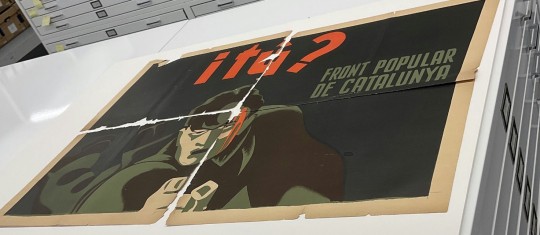
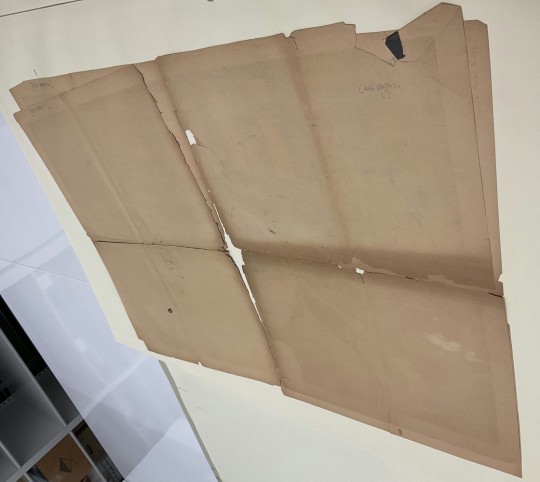
ALBA-ES 45, copy 4 “i tu?” (Photos by: M. Lindenburg)
“Allisteu-vos a les milicies antifeixistes”
The poster “Allisteu-vos a les milicies antifeixistes,” belongs to a series of posters collected at The Franklin Institute in Philadelphia as part of a circulating exhibit.
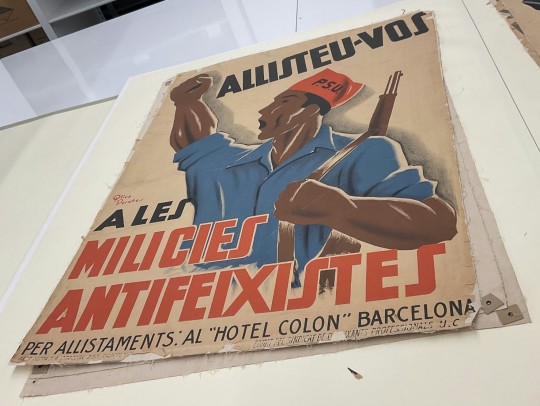
ALBA-ES 116, recto, “Allisteu-vos a les milicies antifeixistes” (Photo by: M. Lindenburg)
These interest me because of how they were mounted for the exhibition. Rather than encapsulating the posters or leaving them untouched, this exhibitor chose to attach muslin across the back and use cardboard and grommets to hang them.
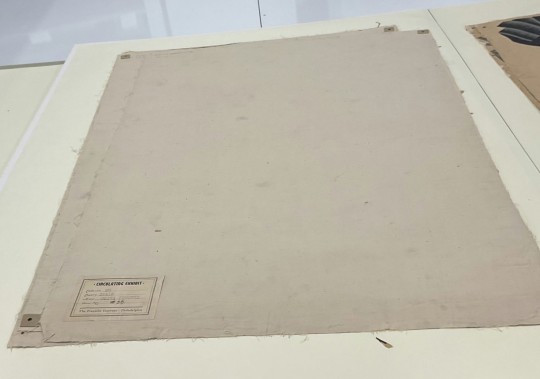
ALBA-ES 116, verso, “Allisteu-vos a les milicies antifeixistes” (Photo by: M. Lindenburg)
Annual Xmas Eve Ball
Poster ALBA-US-15, uses a mounting technique commonly used with posters associated with the Veterans of the Abraham Lincoln Brigade (VALB).
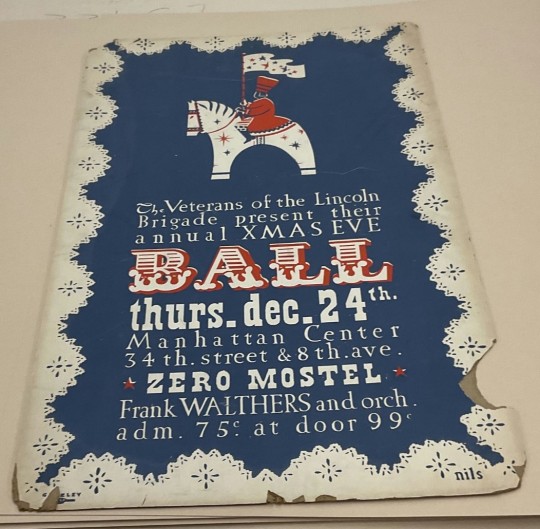
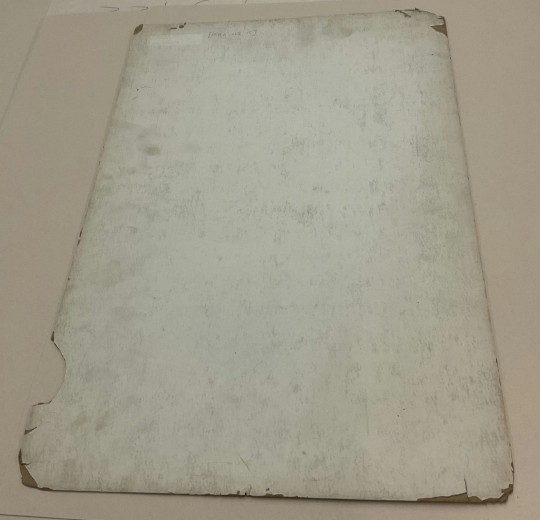
ALBA-US-15 (Photo by: M. Lindenburg)
It is mounted on a paperboard, which makes it somewhat heavy and unwieldy when grouped in folders. Take note of the headline of Zero Mostel, which shows the support the VALB received, even from celebrities.
THE INSCRIBED NAMES & WHO THEY WERE
Archie Brown is a signature I’ve encountered a lot in this collection.

ALBA-ES-8 (Photo by: M. Lindenburg)
Brown was born in 1911 in Sioux City, Iowa. He was brought into the world of labor activism at an early age. 1934, he was arrested at a Young Communist League (YCL) event in San Pedro. But he continued with his activism despite this. In 1937, Brown got tuned into the struggles in Spain, particularly after his brother was recruited to the International Brigade. In San Francisco, Brown was denied a passport because of his radical reputation. So, he went to New York City and stowed away on a ship to France, where he would travel to Spain. He joined the forces of the Abraham Lincoln Brigade and, even after the war, continued to fight as a soldier and an activist.

Archie Brown, 1982 (Photo by: R. Bermack). Image Source.
Harry Hakam is an interesting character, partially because of his frequent correspondence with other members of the Abraham Lincoln Brigade.
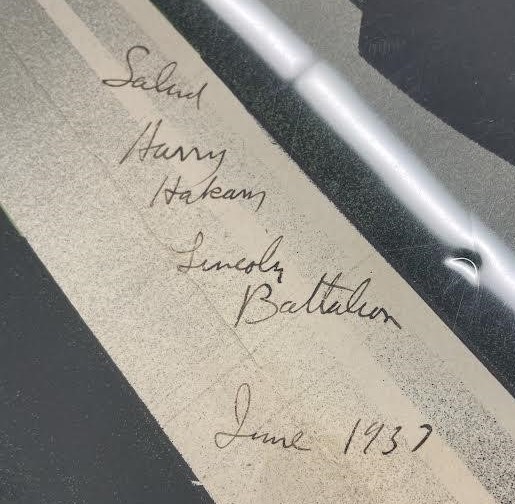
ALBA-ES-77 (Photo by: M. Lindenburg)
Hakam was born in Brooklyn in 1913. In February 1937, he sailed to France, arriving in Spain in March of the same year. He served primarily as a battalion runner, returning to the US in 1938. However, it’s his correspondence that makes him shine. His collection marker (Hakam) is found on many posters that share others’ names, meaning he likely sent these posters back and forth between fellow members.
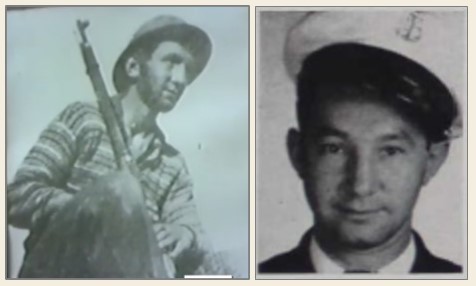
Harry Hakam. Image Source.
We don’t have as much information on Al Erdberg, but we do know from the Harry Hakam Papers (ALBA.046) and the fact that Erdberg shows up in the Hakam posters that they had correspondence. Erdberg was likely part of the Abraham Lincoln Brigade or a state-side supporter. This would be an interesting figure to research further.
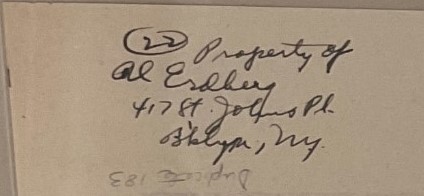
ALBA-ES-30 (Photo by: M. Lindenburg)
REHOUSING
A big problem I encountered when surveying these posters was with the housing rather than the posters themselves. Often, I encountered groups of ten or more posters in a folder, making the folder heavy and difficult to move. Further, if these posters are in mylar encapsulation, they become even heavier. To remedy this, the posters need to be rehoused into sturdier folders. I began some of this work with Laura McCann this semester, and the rehousing of the posters will continue through the summer.
VELCRO STICKERS
Some of the posters I found had velcro stickers left on the mylar encapsulation. These are likely from previous exhibition techniques, where the posters were attached to a wall using velcro. However, this technique is now deemed problematic, so Lindsey Tyne and I used a process to remove these stickers. We used a hot iron to heat small metal spatulas, which we then used to melt the adhesive of the sticker and lift the velcro off. This is a delicate process, but we got into a rhythm and moved fairly quickly.
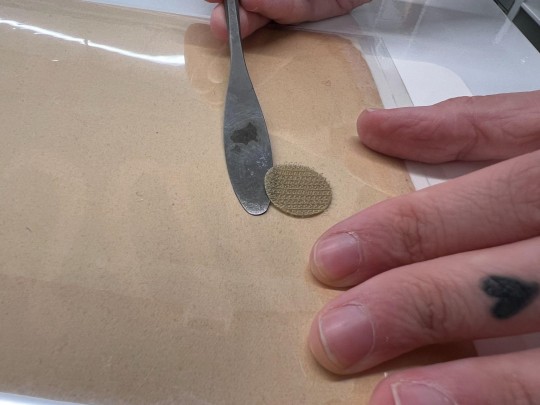
Mia removing velcro (Photo by: L. Tyne)
This collection has taught me many things. I have learned to be patient, think carefully, and always be on the lookout for new observations, among many other smaller skills. If I were asked to advise someone starting a similar project, I encourage them to take note of their natural rhythm so that they can figure out which order of surveying works best for them to maximize efficiency. I would also tell them not to be afraid of asking questions, even if it’s clarifying something they think you already know. This has been an incredible experience, and I feel so lucky to have been a part of this collection. Thank you for taking the time to read my post!
#nyulibraries#nyuspecialcollections#libraryconservation#paperconservation#librarypreservation#preservingthepast
27 notes
·
View notes
Text

Happy #TeacherAppreciationWeek to all the teachers out there. Yes, even the feline ones.
Tradecard from : Henry H. Hildebrand, prescription druggist. [United States, ca. 1888]
33 notes
·
View notes
Photo
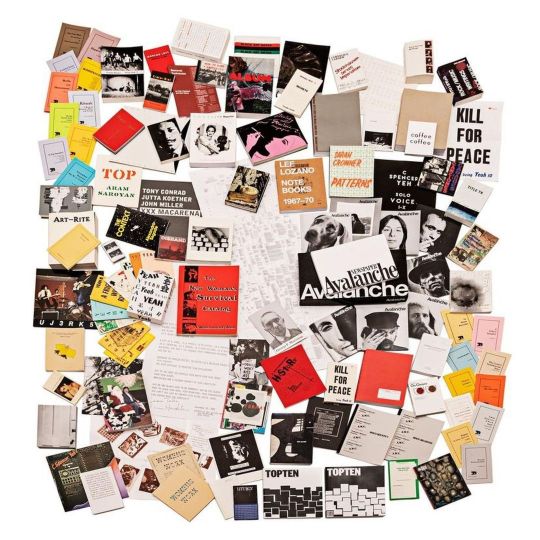
Congratulations @primaryinfo !! #Repost・・・Primary Information is thrilled to announce the acquisition of our complete catalog of trade titles by SFMOMA and NYU Libraries! Spanning from our earliest books all the way through future titles into 2027, each acquisition includes over 200 artists' books, including long out-of-print titles such as "Avalanche," the Art Workers Coalition's "Documents 1" and "Open Hearing," and "Destroy All Monsters Magazine," as well as recent publications such as "Black Art Notes," "Godzilla: Asian American Art Network 1990-2001," and "Women in Concrete Poetry: 1959-1979." It's a great honor for these venerable institutions to serve as stewards for what will total more than 20 years of programmatic output, ensuring that each of our books is freely accessible to artists, students, and members of the general public interested in new and canonical artists' publications! Photos by @naokomaeda @sfmomalibrary @nyulibraries #PrimaryInformation #SFMOMA #SFMOMALibrary #NYULibraries https://www.instagram.com/p/ChcKiX9OJBq/?igshid=NGJjMDIxMWI=
0 notes
Link
Omg this class!!
And also the whole syllabus just in case:
Description According to anthropologists Filip de Boeck and René Devisch, divination “constitutes a space in which cognitive structures are transformed and new relations are generated in and between the human body, the social body and the cosmos.” In this class, students will learn the history of divination, engage in the practice of divination, and speculate on what forms divination might take in a world where the human body, the social body, and even the cosmos(!) are digitally mediated. Starting with an understanding of ritual and folk culture, we will track the history of fortune-telling from the casting of lots to computer-generated randomness to the contemporary revival of Tarot; from reading entrails to astrology to data science; from glossolalia to surrealist writing practices to the “ghost in the machine” of artificial intelligence. Weekly readings and assignments culminate in a final project.
Schedule Class schedule with readings, assignments and due dates.
Ethos, methodology, structure, outcomes This is a critical making/speculative design class focused on the practice of divination. We’ll discuss and elaborate on topics related to this topic every week through assigned readings and in-class lectures and technical tutorials. You’ll be assigned a series of “meditations” on these topics, which encourage you to make something (an object, an intervention, a computer program) that engages with, expands upon and/or challenges the content of our discussions. We’ll spend a good deal of time in class “workshopping” the results of these meditations.
By the last class session, students will be literate in practical and academic approaches to ritual and divination, especially as they apply to digital art and design. Students will have made several prototype projects that exercise this literacy and a final project that shows their mastery of the material presented in class.
For the most part, the content of this class will be non-technical (i.e., this is not a programming class). Students are expected to bring their own technical know-how to their projects. The goal of the class is for students to be able to incorporate elements of academic and practical research in divination into their own practices as makers, designers and artists.
Epoché In this class, we engage in a radical epoché (or bracketing): we set aside questions of objectivity and natural science in order to more clearly pay attention to internal and collective experiences (phenomenology). This focus requires an applied approach to divination, meaning that we will actually enact and engage in the practices under discussion. I believe this is the best way to understand how divination works and (just as importantly) feels. Keeping this in mind, students are invited to recuse themselves from any activities that make them feel uncomfortable. (We’ll further discuss the dimensions of this in class.)
Traditionally, Western academics have frowned on divination as a practice, considering it little more than unscientific superstition. Nevertheless, many of the readings we’ll be discussing in this class point to empirical explanations (whether cognitive, social, or biological) for the phenomenology of divination. These readings should not be understood as an attempt at “debunking,” but simply as a means to help us better contextualize and understand our experiences.
Materials For the fourth session, students will need to obtain a Tarot deck. A traditional, Rider-Waite-style 78-card deck is preferred. Here’s a helpful but not exhaustive list; you probably can’t go wrong with any of these decks. Nothing wrong at all with going for the classic.
There are no required textbooks, but for students particularly interested in Tarot interpretations, I highly recommend The Little Monsters Tarot Guidebook (also available as an instant digital download).
Electronic Rituals, Oracles and Fortune Telling / Spring 2018 Schedule Syllabus here.
With a few exceptions, all readings should be accessible via the hyperlinks provided, as long as you are using a computer connected to the NYU network. Alternate methods of obtaining the readings will be discussed in class.
Students will be assigned to topical connection presentation slots separately. I’ll provide this schedule by e-mail.
Session 01: Introduction Date: 2018-01-25.
Introduction and syllabus Divination: Concepts and directions Reading assigned To be discussed in session 02.
Burroughs, Benjamin. “Facebook and FarmVille: A Digital Ritual Analysis of Social Gaming.” Games and Culture, vol. 9, no. 3, May 2014, pp. 151–66. SAGE Journals, doi:10.1177/1555412014535663. Altglas, Véronique. “Introduction.” From Yoga to Kabbalah: Religious Exoticism and the Logics of Bricolage. : Oxford University Press, 2014-06-02. Oxford Scholarship Online. 2014-06-19. Date Accessed 8 Mar. 2017 http://www.oxfordscholarship.com/view/10.1093/acprof:oso/9780199997626.001.0001/acprof-9780199997626-chapter-1. Alexander, Leigh. “Why We Still Practice Superstitious Rituals With Our Technology.” Motherboard, https://motherboard.vice.com/en_us/article/why-we-still-practice-superstitious-rituals-with-our-technology. Accessed 5 May 2017. Optional:
Wallendorf, Melanie, and Eric J. Arnould. “‘We Gather Together’: Consumption Rituals of Thanksgiving Day.” Journal of Consumer Research, vol. 18, no. 1, 1991, pp. 13–31. JSTOR, http://www.jstor.org/stable/2489481. Session 02: Ritual and society Date: 2018-02-01.
Reading discussion Ritual and spirituality Meditation #1 assigned Due at the beginning of session 03.
Imagine an “electronic” ritual and prototype the necessary systems to perform the ritual. Then perform the ritual and document the process. (This can be a ritual that you perform on your own, or you can involve other people.) Your imagined scenario can be speculative (e.g., a science fiction), critical, mystical, oriented toward self-care, etc. What effect does your ritual have in the world? On its participants?
Session 03: Cleromancy Date: 2018-02-08.
Meditation workshop Topical connections presentations Introduction to cleromancy Reading assigned To be discussed in session 04.
Tedlock, Barbara. “Divination as a Way of Knowing: Embodiment, Visualisation, Narrative, and Interpretation.” Folklore, vol. 112, no. 2, 2001, pp. 189–97. JSTOR, http://www.jstor.org/stable/1260832. Semetsky, Inna. “Tarot and Projective Hypothesis.” Re-Symbolization of the Self: Human Development and Tarot Hermeneutic, SensePublishers, 2011, pp. 73–83, doi:10.1007/978-94-6091-421-8_7. Semetsky, Inna. “Stories Lives Tell.” Re-Symbolization of the Self: Human Development and Tarot Hermeneutic, SensePublishers, 2011, pp. 85–144, doi:10.1007/978-94-6091-421-8_8. (NOTE: You only need to read the first two or three case studies in this chapter.) Greer, Mary. “Origins of Cartomancy (Playing Card Divination).” Mary K. Greer’s Tarot Blog, 1 Apr. 2008, https://marykgreer.com/2008/04/01/origins-of-divination-with-playing-cards/. Session 04: Fortune telling as collaborative storytelling Date: 2018-02-15.
Meditation workshop Topical connections presentations Tarot as storytelling In-class exercise: Tarot reading. Notes: Tarot as collaborative storytelling. Meditation #2 assigned Due at the beginning of session 05.
Invent your own “oracle deck.” Your deck doesn’t have to be a physical object (though it can be). Keeping in mind the formal characteristics of cleromancy discussed in class, consider how digital media can complicate/diminish/augment the parts and processes of a reading. (Some questions to get you started: Who gets to participate? Can a computer program be a “reader”? A “querent”? What can a “card” be? What can a “deck” be?)
A few examples:
Net Tarot @thelastdeck @phantomfunhouse Morgan’s Tarot Resources:
A.E. Waite’s The Pictorial Key to the Tarot (includes links to high-quality scans, though note potential copyright issues) Tarot interpretations in JSON format Session 05: Prophecy and prediction Date: 2018-02-22.
Meditation workshop Topical connections presentations Omens, augury, phrenology, predictions, interpretations Reading assigned To be discussed in session 06.
A contrastive analysis of astrology and horoscopes (ch. 4, pp.97-124) from Aphek, Edna, and Yishai Tobin. Semiotics of Fortune-Telling. John Benjamins Publishing Company, 1990. ProQuest Ebook Central, http://ebookcentral.proquest.com/lib/nyulibrary-ebooks/detail.action?docID=802012. Agüera y Arcas, Blaise, et al. “Physiognomy’s New Clothes.” Blaise Aguera y Arcas, 7 May 2017, https://medium.com/@blaisea/physiognomys-new-clothes-f2d4b59fdd6a. Optional:
Carlson, Shawn. “A Double-Blind Test of Astrology.” Nature, vol. 318, no. 6045, Dec. 1985, pp. 419–25. CrossRef, doi:10.1038/318419a0. O’Neil, Cathy. “How Algorithms Rule Our Working Lives.” The Guardian, 1 Sept. 2016. The Guardian, https://www.theguardian.com/science/2016/sep/01/how-algorithms-rule-our-working-lives. Session 06: Astrology and dream interpretation Date: 2018-03-01.
Reading discussion Topical connections presentations Astrology and dream interpretation Meditation #3 assigned Due at the beginning of session 07.
Invent an “-omancy,” or a form of divination/prophecy based on observing and interpreting natural events. Your reading of “natural” should make some reference to digital/electronic/computational media. (What counts as a “natural event” on the Internet? What’s the electronic equivalent of phrenology, from both a physical computing perspective and a data analysis perspective? Does it count as “interpretation” if it’s being performed by a computer program?) I’m especially interested in responses that take the form of purposefully inaccurate data analysis.
A few examples:
A rough “personality test” for you to riff off of Darius Kazemi on @SortingBot David Bowen’s Cloud Tweets Nina Katchadourian’s Talking Popcorn Resources:
Tea-cup reading, and the Art of Fortune-Telling by Tea Leaves (includes helpful lists of tasseography interpretations) Gustav Hindman Miller’s Ten Thousand Dreams Interpreted in handy HTML format (perfect for scraping) A list of personality traits from Corpora Project For inspiration: Wikipedia’s list of divination techniques Session 07: Mediums and messages Date: 2018-03-08.
Meditation workshop Topical connections presentations Telesthesia (clairvoyance, spirit boards, automatic writing) Reading assigned Chapters 2 and 3 from Wooffitt, Robin. The Language of Mediums and Psychics: The Social Organization of Everyday Miracles. Ashgate Publishing, Ltd., 2006. Romano, Aja. “How Ouija Boards Work. (Hint: It’s Not Ghosts.).” Vox, 29 Oct. 2016, https://www.vox.com/2016/10/29/13301590/how-ouija-boards-work-debunked-ideomotor-effect Newton, Casey. “When Her Best Friend Died, She Used Artificial Intelligence to Keep Talking to Him.” TheVerge.Com, 6 Oct. 2016, http://www.theverge.com/a/luka-artificial-intelligence-memorial-roman-mazurenko-bot. Optional:
Hartman, Charles O. “The Sinclair ZX-81.” Virtual Muse: Experiments in Computer Poetry, Wesleyan University Press, 1996, pp. 28–37. Session 08: Automatic writing Date: 2018-03-22.
Reading discussion Topical connections presentations In-class exercise and code examples Meditation #4 assigned Choose one of the following options:
Make a prototype of an electronic spirit board or other method for producing language or communication from unconscious/subconscious/collective gesture. (You can use procedural methods like those discussed in class, or invent your own method.) Questions to consider: How does your spirit board produce “coherence” (if, in fact, it does produce coherence)? Who is participating? Create a psychic “experiment” with your interpretation of an electronic equivalent of Zener Cards. Document your methodology and your results. (What is it possible to be “psychic” about in a digital context?) Resources:
A simple Markov chain “chat” bot in p5.js (More on Markov chain text generation, more on RiTa.js) Example: Using Tracery in p5.js (my Tracery tutorial) Conducting an experiment Session 09: The hermeneutics of randomness Date: 2018-03-29.
Meditation workshop Topical connections presentations Randomness Readings assigned TK
Session 10: Soooo random Date: 2018-04-05.
Reading discussion Topical connections presentations Final project proposals In-class exercise Optional readings TK
Meditation #5 assigned Due at the beginning of session 11.
Produce your own implementation of digital randomness, without using any pre-existing implementation (e.g., you can’t use the random() or noise() functions in p5.js). More details TK.
Resources:
Duplicate this sketch and implement your own random number generator, then Add the “Full Screen” link of your sketch to this spreadsheet Allison’s examples (don’t peek at these until you’ve tried your own): Linear feedback shift register (good explanation here) Logistic map (explanation, or watch this wonderful Numberphile video) xorshift Interpolated (a very, very simplified implementation of Perlin noise) Randomness with an entropy source Interactive version of the hot hand/small numbers “streak” experiment A Million Random Digits Jeff Thompson’s White Noise Boutique An example of ritual “randomness” in Tarot simulations Session 11: Hexes, spells, amulets and talismans Date: 2018-04-12.
Meditation workshop Topical connections presentations Final project check-in Hexes, spells, amulets and talismans In-class exercise TK Session 12: Collaborative work day Date: 2018-04-19.
In-class discussion and user-testing Other topics TK Session 13: Final projects Date: 2018-04-26.
Final projects, day 1 Session 14: Final projects Date: 2018-05-03.
Final projects, day 2
1 note
·
View note
Text
Bibliography
Bologna, C. (2018, April 21). How To Raise Kids Who Care About The Environment. Retrieved April 21, 2018, from https://www.huffingtonpost.com/entry/raise-kids-who-care-about-the-environment_us_5a9715cce4b07dffeb6f530d
Clements, R., & Musker, J. (Directors). (2016). Moana [Motion picture on DVD]. United States: Walt Disney Studios Motion Pictures.
Disney Animation Studios, W. (2016, September 15). Moana Official Trailer. Retrieved March 26, 2018, from https://www.youtube.com/watch?v=LKFuXETZUsI
Disney Studios, W. (2008, June 20). WALL-E | Trailer | Official Disney UK. Retrieved March 26, 2018, from https://www.youtube.com/watch?v=alIq_wG9FNk
Engle, J. (2016, December 20). Here's What Disney's Moana Still Got Wrong. Retrieved April 09, 2018, from https://www.theinertia.com/environment/heres-what-disneys-moana-still-got-wrong/
Gay, D. (2013, November 20). The untold story of the Pacific Islands. Retrieved April 19, 2018, from https://www.theguardian.com/global-development-professionalsnetwork/2013/nov/20/pacific-islands-energy-environmental-problems
Lebduska, L. (1994). Rethinking Human Need: Seuss's The Lorax. Children's Literature Association Quarterly 19(4), 170-176. Johns Hopkins University Press. Retrieved April 15, 2018, from Project MUSE database.
Movieclips. (2011, October 27). Dr. Seuss' The Lorax (2012) EXCLUSIVE Trailer - HD Movie. Retrieved April 08, 2018, from https://www.youtube.com/watch?v=1bHdzTUNw-4
Renaud, C. (Director). (2012). The Lorax [Motion picture on DVD]. United States: Universal Pictures
Sieff, K. (2017, November 21). The world is drowning in ever-growing mounds of garbage. Retrieved April 15, 2018, from https://www.washingtonpost.com/world/africa/the-world-is-drowning-in-ever-growing-mounds-of-garbage/2017/11/21/cf22e4bd-17a4-473c-89f8-873d48f968cd_story.html?noredirect=on&utm_term=.0f0d7b3b643a
Stanton, A. (Director). (2008). Wall-E [Motion picture on DVD]. United States: Walt Disney Studios Motion Pictures.
Stanton, E. (2016, December 17). The Hole in Moana's Heart. Retrieved April 19, 2018, from http://brightlightsfilm.com/hole-moanas-heart/#.Wtjiqy_MxbW
Weisse, M., & Goldman, E. D. (2017, October 23). Global Tree Cover Loss Rose 51 Percent in 2016. Retrieved April 19, 2018, from http://www.wri.org/blog/2017/10/global-tree-cover-loss-rose-51-percent-2016
Whitley, D., & Nelson, C. (2012). The Idea of Nature in Disney Animation: From Snow White to WALL-E. Retrieved April 08, 2018, from https://ebookcentral-proquest-com.proxy.library.nyu.edu/lib/nyulibrary-ebooks/reader.action?docID=906957&query=.
Wilkinson, A. (2017, June 03). Now is the time to revisit Wall-E, perhaps the finest environmental film of the past decade. Retrieved April 08, 2018, from https://www.vox.com/culture/2017/6/3/15728220/wall-e-pixar-environmentalist-movie-of-week-paris-accord

0 notes
Link
“I guess you can’t use @NYULibraries if you don’t have Twitter or Facebook?” https://mobile.twitter.com/dietrich/status/956937724983783425
0 notes
Text
Preserving Leaf Paintings in an Anglo-Indian Commonplace Book, 1822-1825
Hello, I’m Alexa Machnik, a third-year graduate student at the Conservation Center, Institute of Fine Arts, NYU. I first came to the Barbara Goldsmith Preservation & Conservation Department in Fall 2022 as a student in the graduate course, Conservation in Context, taught by Laura McCann, Director of Preservation. During this course, we delved into the world of library conservation, exploring the value systems that guide preservation decision-making and treatment action in academic research libraries. One of my class projects involved rehousing delicate leaf paintings from an early 19th-century commonplace book, or friendship album, part of the Fales Library holdings in the Special Collections at NYU Libraries (figs. 1-2) [1]. In honor of Preservation Week, I will share the intriguing history of the book and discuss the decisions that were made to preserve the leaves.
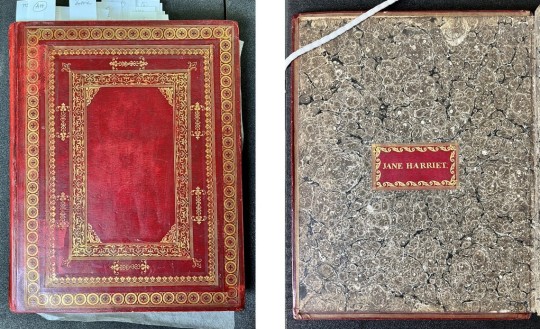
Figure 1 [left]: Front cover of the commonplace book, bound in gold-tooled red morocco leather. Figure 2 [right]: Ownership label of “Jane Harriet [Blechynden]” on front marbled pastedown.
The book in question was compiled by Jane Harriet Blechynden (1806-1827) in England between 1822 and 1825. It holds her personal collection of handwritten and acquired materials, with contributions from her sisters, Emma and Sarah, who wrote original poems about sisterhood, separation, and their Anglo-Indian ancestry. The three women were the daughters of a British merchant residing in Calcutta, and while born in India, they were educated in England [2]. There is not a great deal known about Jane Harriet’s life in England, but her impending return to India in 1825 is documented in an emotional verse by Emma (fig. 3):
“Thus in parting my sister we’re breaking a link / Which may ne’er be united again / And firm as that chain was ‘tis painful to think / That absence may send it twain.”

Figure 3: Excerpt from the original poem, “Parting and a Meeting,” signed by Emma.
Jane Harriet’s book offers insights into her personhood, social connections, and sensibilities as an artist and collector. In addition to written entries, she inserted a compendium of acquired materials–pressed flowers, her own original drawings, and numerous paintings–between pages of the book (figs. 4-6).

Figures 4-6 [left to right]: A small sampling of the ephemeral treasures found in the book, including a dried pressed flower, a drawing on pith possibly by Jane Harriet, and a cut-paper silhouette.
Notably, six of these paintings are executed on the dried leaves of the Bodhi tree, a sacred plant indigenous to Asia with distinct spade-shaped, long-tipped leaves (fig. 7) [3]. Although leaf painting has origins in Buddhist traditions, by the time Jane Harriet collected her leaf paintings, it had already evolved into a form of Chinese export art in Europe. Her leaves depict secular scenes of contemporary life in China and botanical subjects, which are typical of the export genre (fig. 8). Their inclusion in the book implies that Jane was among the many people who partook in the avid collecting of China trade goods during the first few decades of the 19th century, a time when European fascination for Chinese culture and art was at its peak.

Figure 7: A leaf painting, as found loose in the book and partially lifted to show the thin, translucent nature of the leaf support.

Figure 8: Another leaf painting from the book, oriented with the leaf tip at the bottom of the image, depicting flowers and a butterfly.
The initial rush of excitement that I felt at finding the leaf paintings soon turned to concern as I gave thought to their long-term preservation at NYU Libraries, where researchers are expected to handle the book. The leaf paintings were loose in between the pages, which raised a series of “what ifs” about the potential dangers they could encounter. What if the leaves slip from the book? What if they bend or break as the pages are turned? What if the painted surfaces become abraded? The paintings were made with opaque pigment-based watercolors on exceptionally delicate, skeletonized leaves that have been primed with a thin organic coating. Despite being intact, their inherent fragility means that they are vulnerable to even the slightest touch. After considerable discussion, the Conservation Unit decided that in order for the leaf paintings to be preserved and safely accessed by researchers, they should be housed separately from the book.
I thoroughly examined the condition of the leaves and the painted surfaces in order to make a housing recommendation. Despite some minor damage, all were in stable condition. Thus, the ideal housing would provide support to prevent any further damage, such as paint loss and leaf breakage, and at the same time allow the leaves to maintain their translucency. To achieve this, I opted to mount them in double-sided window mats with a support made from clear polyester film, or Mylar® [4]. The addition of the Mylar® would not only create a stable surface for the leaf paintings but also enable the viewing of both sides (fig. 9).
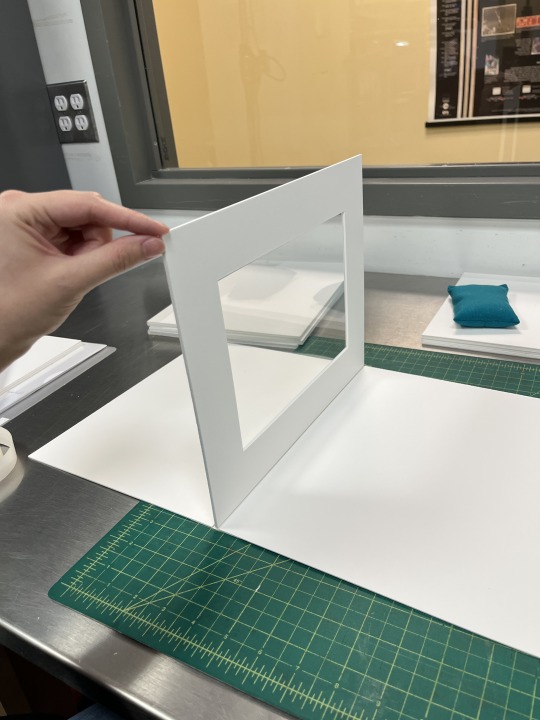
Figure 9: View of the double-sided window mat with a Mylar® support.
My next challenge was to figure out how to mount the leaves onto the Mylar® support without the use of adhesive [5]. After consulting with conservation staff and creating mock-ups, short, discreet Mylar® tabs were selected as the best option to secure them into place (figs. 10-11). For this process, I positioned a single leaf painting onto the support and selectively placed the tabs around its perimeter, making sure the tabs did not overlap any areas of paint. I then used a handheld spot-welding pen to fuse the tabs to the support. Since this process was done in-situ, near the leaf, it required lots of precision practice and encouragement from colleagues before I felt confident enough for the task.
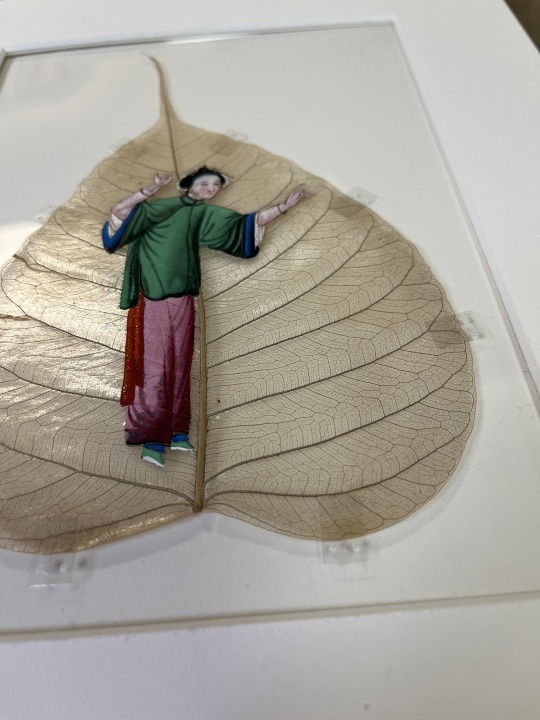
Figure 10: Detail of a mounted leaf painting. Notice that the Mylar® tabs are welded just outside the leaf and extend minimally over the edges, holding it in place with gentle pressure.
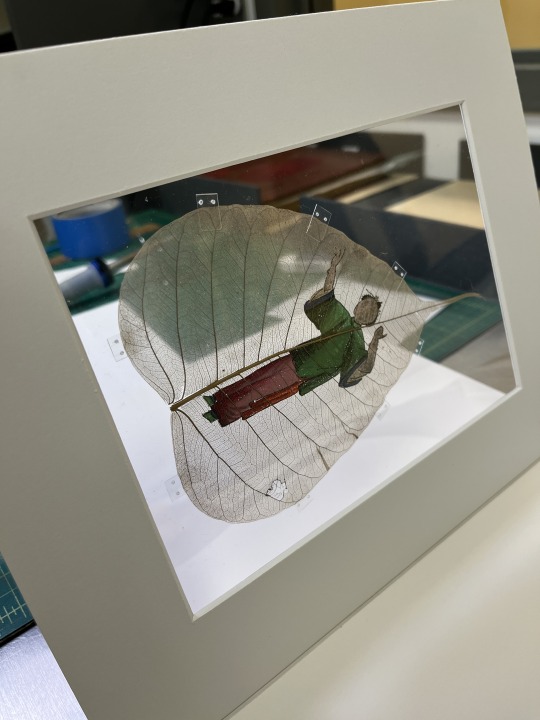
Figure 11: The backside of a mounted leaf painting viewed through the Mylar® support. This gives researchers access to the painting’s verso, where an underdrawing and other signs of artistic process can be discerned.
At the time of writing this post, I successfully housed the six leaf paintings in their double-sided window mats (figs. 12-13). This housing project, while complete, is just one part of the ongoing effort to preserve the commonplace book, and the Conservation Unit is continuing work on other elements of the book to ensure its safe return to Special Collections.
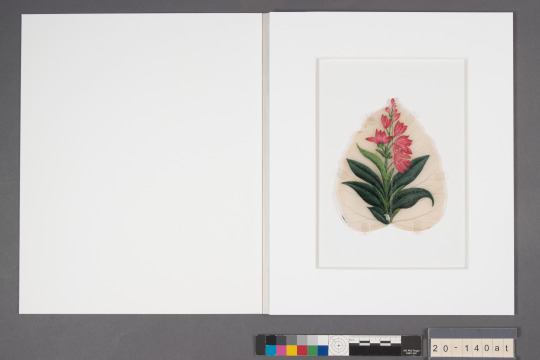
Figure 12: Example of the completed housing, showing the front of a leaf painting.

Figure 13: Back of a leaf painting.
Though my involvement in the project has come to an end, I have gained a very special appreciation for the commonplace book and the preservation challenges it presents. The experience of learning directly from NYU Libraries Special Collections was especially invaluable, providing me with opportunities to participate in complex decision-making processes unique to large research libraries driven by user needs. Before signing off, I’d like to extend my gratitude to my supervisors, Laura McCann, Director, and Lindsey Tyne, Conservation Librarian, and the entire team at the Barbara Goldsmith Conservation Lab for their unwavering support and enthusiasm throughout this project. Thank you all very much!
Notes:
[1] A commonplace book is a centralized place for an individual to record information, whether it be their personal thoughts or quotes from outside literary sources. Friendship albums, by contrast, contain handwritten entries from the family, friends, or acquaintances of the owner (often female). Both forms of commonplacing sustained popularity in Europe and America throughout the 19th century. To learn more about this fascinating literary genre, see Jenifer Blouin, “Eternal Perspectives in Nineteenth-Century Friendship Albums,” The Hilltop Review, Vol. 9, Issue 1 (2016) and Victoria E. Burke, “Recent Studies in Commonplace Books,” English Literary Renaissance, Vol. 43, No. 1 (2013), 153-177.
[2] Much of what is known about Jane Harriet (also known in her family as Harriet) comes from the Blechynden papers in the British Library (Add. Mss. 45578-663). This large holding contains the diaries of her father, Richard (Add. Mss. 45581-653), and older brother, Arthur (Add. Mss. 45654-61). For a secondary account of the Blechynden household, see Peter Robb, Sentiment and Self: Richard Blechynden’s Calcutta Diaries, 1791-1822 (New Delhi: Oxford University Press, 2011).
[3] Michele Matteini, “Written on a Bodhi tree leaf,” Anthropology and Aesthetics, Vol. 75-76 (2021), 45-58.
[4] The design of the double-sided mats is based on an instructional guide made available by the Library of Congress. “Double-Sided Mat,” Library of Congress, accessed 1 February 2023.
[5] We chose not to use adhesives or traditional paper-hinging techniques to mount the leaf paintings for several reasons. As noted, the paintings are on fragile, non-paper-based supports that have an organic coating, which may be derived from plant gum. The leaf supports are thin, translucent, and highly vulnerable to breakage, so applying hinges directly with adhesive might permanently alter their appearance or risk further damage to the leaves over time, especially if they need to be removed from the housing in the future.
Photographs: Alexa Machnik
#NYULibraries#NYUSpecialCollections#FalesLibrary#nyuifa#nyuart#librarypreservation#libraryconservation#collectionscare#artconservation#paperconservation#bookconservation#artpreservation#preservingthepast#PreservationWeek#preservationweek2023
212 notes
·
View notes
Text
"Azul" Print Comparison
This blog post for Preservation Week was contributed by media preservation graduate assistant Adrianne Lundy about her work on the Roland Legiardi-Laura and Joanna Kiernan Collection on the Azul Documentary (TAM.814).
Azul was directed by Roland Legiardi-Laura in 1988. The film focuses on Nicaraguan poetry and culture, celebrating the 100th anniversary of Ruben Dario’s published book of the same title. In 2022, NYU Special Collections acquired Azul’s many production materials, including raw footage and audio recordings.
Included in these acquired materials were nine separate prints of the film. All were assumed to be exhibition prints, based on their labeling and because they were housed in travel carriers used to ship prints to exhibitors. It’s not uncommon for duplicate materials to exist in a collection. However, maintaining duplicates means committing storage, funds, and resources that could otherwise be devoted to original elements of other collections. Exhibition prints also tend to have high rates of damage from projectors, abundant handling, and travel wear and tear. It was decided that these prints should be inspected and assessed to identify the best quality prints of the bunch.
The inspection of all nine prints took place in March and April of this year. The film is 105 minutes, and each print consisted of three reels. I made notes on key condition points, including the number of splices and level of shrinkage. A common form of damage across many of the prints came from misloading projectors or from DIY-ed projection marks. On two different occasions, the first ~100 feet of image on the first reel were heavily scratched, contained damaged perforations, and edge damage, but contained very little damage going forward. This is as if a projectionist had improperly loaded the film, stopped, corrected, and reloaded.
On other occasions, the projection marks varied in how they were implemented. Oftentimes individual projectionists/venues would have their own systems for indicating that a reel change was needed. On a number of prints, the heads and tails of the reels were painted white, presumably to indicate this.


On other occasions, one or two frames were cut and re-spliced into the film. This was likely a result of the three reels being edited together onto one reel for easier projection, and then separated again when the print was returned.


Another common issue across almost all prints were high levels of shrinkage. Most prints were found to have shrunk by 0.3% or more. Prints with 0.5% or higher shrinkage were noted as unsuitable for projection.
In inspecting the films, it was found that some prints were subtitled in English, while others were not. For this reason, a “best copy” was sought of each of these two versions. The two unsubtitled copies had the most vibrant colors of all the nine prints. Both were printed on Eastman 7243 Safety Stock, a stock used for color master positives. The stock type, plus the lack of subtitles, indicates that they may be of an earlier generation than the rest of the prints in the collection. One was in excellent condition, while the other suffered from projector damage and shrinkage over 0.5%, making the choice of “best copy” simple.




The remaining seven prints all had subtitles and were all marked as “Low-Fade Positive Prints” (LPP). Though this stock was created to prevent color fading (in response to earlier color stocks that were susceptible to fading to a magenta color), the colors of these prints often appeared a bit duller in comparison to the 7243 prints. Despite this, there was one film that registered as having 0% shrinkage, along with a minimal number of splices.
Additional repairs will likely still be needed on these prints. The subtitled print was one of the versions with projector damage at the head, though the rest of the film is in very good condition. Though no perfs were broken, many were bent and damaged. The non-subtitled version has an improper tape splice halfway through the second reel that is collecting dust and grime. Despite this, it was wonderful to identify two minimally damaged prints to represent these two versions of Azul.
#preservationweek#nyulibraries#PreservationWeek2024#nyuspecialcollections#Azul#filmpreservation#16mm film
6 notes
·
View notes
Text
Preservation Week 2023
Virtual Presentation: Conservation of Balinese Shadow Puppets from the Mabou Mines Archives
Date: Tuesday, May 2, 2023, 1:00 - 2:00 PM (EST)
Location: Virtual Event/Zoom
Registration: https://nyu_preservation_week_2023.eventbrite.com
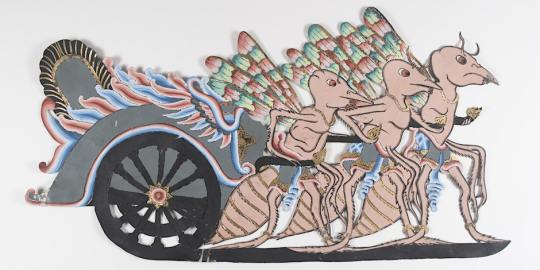
Image: a Balinese shadow puppet from the Mabou Mines Archive, NYU Special Collections.
Since last November, Conservation Center student Peiyuan Sun has been conducting research and conservation treatment on a group of Balinese shadow puppets from the Mabou Mines Archive (MSS.133). In this presentation, she will talk about the information that she has discovered regarding the history and manufacture of these materials and the ways in which she is actively working to make these items more accessible to future users.
Peiyuan Sun received her B.A. in Art History from NYU in 2018. She is in her final year at NYU’s Institute of Fine Arts, where she is a candidate for an M.A. in Art History and M.S. in Conservation of Historic and Artistic Works. Since fall 2022, Peiyuan has been working as an Andrew Mellon Fellow at the Barbara Goldsmith Preservation and Conservation Department for her curriculum internship under the supervision of Preventive Conservator Jessica Pace.
This event is presented in celebration of Preservation Week, an annual initiative of the American Library Association aimed at connecting our communities through events, activities, and resources that highlight what we can do, individually and together, to preserve our personal and shared collections.
#PreservationWeek2023#PreservationWeek#NYULibraries#NYUSpecialCollections#FalesLibrary#nyuifa#nyuart#librarypreservation#libraryconservation#collectionscare#artconservation#artpreservation#preservingthepast
27 notes
·
View notes
Text
Preservation Week 2024
Virtual Presentation
Go Violets!: The History & Conservation of NYU’s Yearbook Collection
Date & Time: Wednesday, May 1, 2024 · 11 AM - 11:45 AM EDT Location: Virtual RSVP: eventbrite Event Series: NYU Libraries Preservation Week 2024

In celebration of Preservation Week 2024, the Barbara Goldsmith Preservation & Conservation Department is hosting a virtual presentation exploring NYU Libraries’ extensive yearbook collection. The collection contains almost 1000 yearbooks dating from 1887 to 2012 issued by New York University and its component schools. It is one of the most heavily used collections in the New York University Archives. University Archivist Janet Bunde will discuss the history and use of the collection, and Special Collections Conservator Dawn Mankowski will discuss conservation treatment and her recent survey of the collection that will be used to guide our preservation priorities and ensure continued access to this important record of NYU history.
Collection Information: https://findingaids.library.nyu.edu/archives/mc_304/
Janet Bunde (she/her) is the University Archivist in the Special Collections Department at NYU Libraries where she is dedicated to the stewardship and preservation of the collections. Janet holds a BA in history with a concentration in peace and conflict studies from Haverford College, and an MA in history with a certificate in archival administration from New York University.
Dawn Mankowski (she/her) is a Special Collections Conservator in the Barbara Goldsmith Preservation & Conservation Department at NYU Libraries where she cares for and carries out conservation treatment on NYU’s library and archival collections. Dawn holds a BA in Art History and Anthropology from the University of Arizona, and an MA in the Conservation of Art from SUNY Buffalo State College, specializing in Library and Archives Conservation.

#PreservationWeek2024#PreservationWeek#NYULibraries#NYUSpecialCollections#librarypreservation#libraryconservation#collectionscare#paperconservation#bookconservation#preservingthepast
2 notes
·
View notes
Text
FILM INSPECTION: THE EARLY FILMS OF BETH B
by Emily Jenne, Institute of Fine Arts Conservation Center graduate student
Beth B, one of the most influential filmmakers to emerge from the generative chaos of the 1980s downtown scene, is known for her transgressive head-on confrontation of power structures and sexual politics. She formed the independent film production company B Movies (a play on low-budget films) with her partner Scott B, with whom she has worked over the years along with a panoply of collaborators, downtown luminaries such as Jack Smith, Arto Lindsay, Pat Place, John Lurie, Bill Rice, Gary Indiana, James Nares, Kiki Smith, Tom Otterness, Richard Edson, Vivienne Dick, James Russo, Richard Prince, Ann Magnuson, Jenny Holzer, Richard Kern, Kembra Pfahler, James Habacker, Dirty Martini, Thurston Moore, and Kai Eric (the list goes on). She is still active today, and her recent documentaries zero in on burlesque, no-wave provocateur Lydia Lunch, and the painter Ida Applebroog (who also happens to be Beth B’s mother).
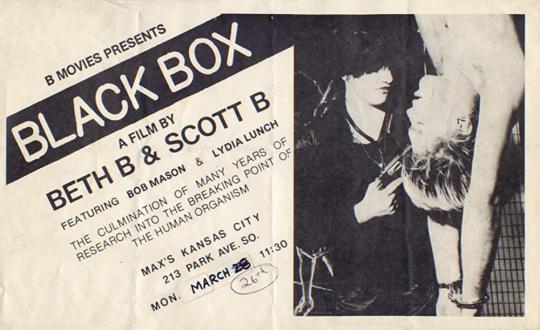
Flyer for ‘Black Box’
As a longtime Beth B fan myself, I was thrilled to have the opportunity to work on several of her early films as they entered NYU’s Special Collection (Beth B Papers, MSS.614; Scott and Beth B (B Movies) Records, MSS.622). This included: G Man (1978), Black Box (1979), The Trap Door (1981), Salvation (1987), Belladonna (1989), and Visiting Desire (1996), as well as a copy of Un Chant d’Amour (1950) the first and last film by French writer Jean Genet, famously banned for its explicit content. As a graduate student specializing in both time-based media and paper conservation at the Institute of Fine Arts NYU, I am often asked where these two seemingly disparate fields overlap. The work I’ve done at the Barbara Goldsmith Preservation & Conservation Department is an excellent example of the two working in tandem. The Beth B collection, for example, has both a media component (the films) and an accompanying paper element (posters and other ephemera).
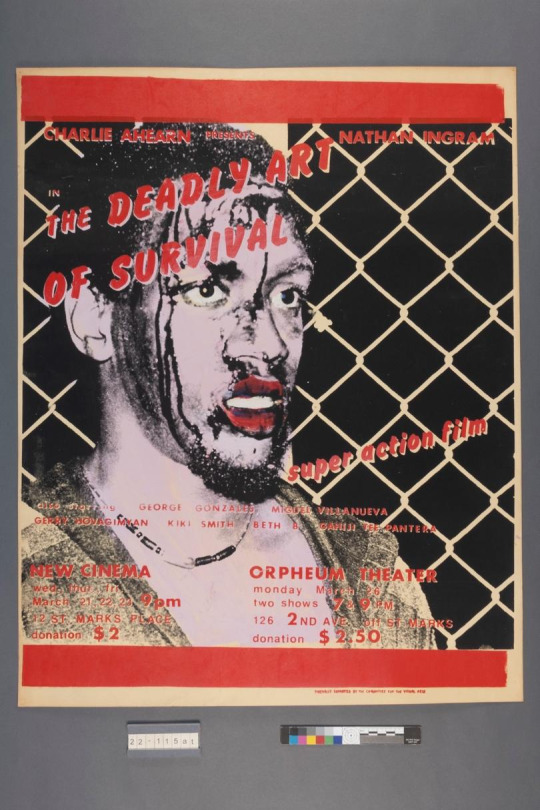
‘The Deadly Art of Survival’ poster, photograph by Dawn Manokowski
Film preservation begins with an assessment logging current conditions and identifying the media, which will determine the best practices for storage. The first order of business is identifying the film base as cellulose nitrate, acetate, or polyester. The film gauges present in the Beth B collection, 16mm and Super 8mm, ruled out one possibility, cellulose nitrate which was never used as an 8mm or 16mm substrate in the West. From there, acetate and polyester could be distinguished using a very high-tech piece of equipment, 3D movie glasses. A pair of polarized 3D glasses folded in half at the nose can be used for a polarization test. When slid between the lenses, a polyester base will birefringe, acetate will not (birefringence is a phenomenon of optical anisotropy in certain materials that causes distinctive visual undulations at changing angles). In the end, all of the films were found to have an acetate base.

The film inspection bench in the Barbara Goldsmith Preservation & Conservation Department.
Further information about the film stock can be determined from clues in the edge code. Using a loupe and cross-referencing with an edge code chart, the year and even the location of manufacture can be established. The placement of a dot within the word ‘safety’ notes the location (acetate film base is known as ‘safety film’ in contrast to its highly reactive and flammable predecessor, cellulose nitrate). The film stock in the Beth B collection was manufactured in Rochester, NY.
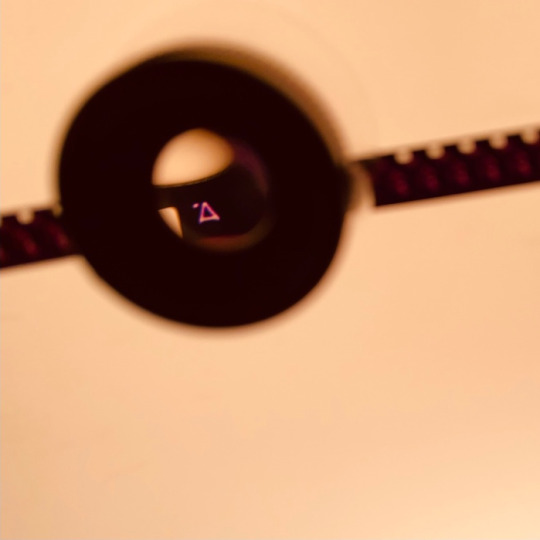
Kodak edge code identifying Rochester, NY as the manufacturing location.

Eastman Kodak Date Code Chart
Information on the soundtrack format was also noted, the Super 8mm reversal films had a magnetic soundtrack, and the 16mm reversal films had a variable density optical track. Other relevant information was also recorded such as instances of surface abrasion, broken sprocket holes, number and character of splices, and any annotations on the head or tail leader (often instructions for the projectionist).

‘Salvation’ Print # 2

‘The Trap Door’ 8mm reel.
The major concern with acetate film base is deacetylation, an irreversible form of deterioration colloquially known as ‘vinegar syndrome’ for its distinctive acidic odor which can be detected at concentrations as low as 1 ppm. Deacetylation is essentially a reversal of the synthesis steps used to make the acetate base, and the reaction produces acetic acid which can also have a detrimental effect on the other component layers of the film. Acetic acid can soften the gelatin emulsion layer and accelerate fading of color dyes in color film. Deacetylation also leads to warpage, embrittlement, channeling, and shrinkage of the film base by as much as 10%. Shrinkage beyond 0.8% makes it dangerous to project the film.
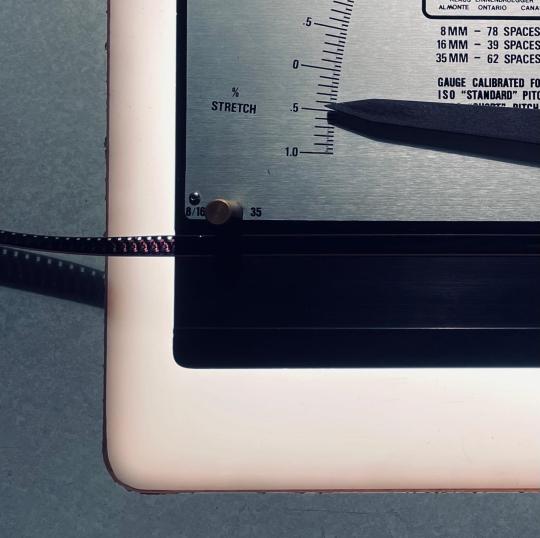
Film shrinkage gauge.
Deacetylation is exacerbated by high humidity and fluctuations in temperature, but further damage can be mitigated with correct storage conditions. The industry standard for measuring the extent of deacetylation is with AD strips, a type of targeted litmus test, which measures acidity on a scale of 0 (blue, indicating no deterioration) to 3 (yellow, which indicates critical condition). In conjunction, multiple readings taken with a film shrinkage gauge can be used to determine the average shrinkage level of the film.

An 8mm film splicer in action.
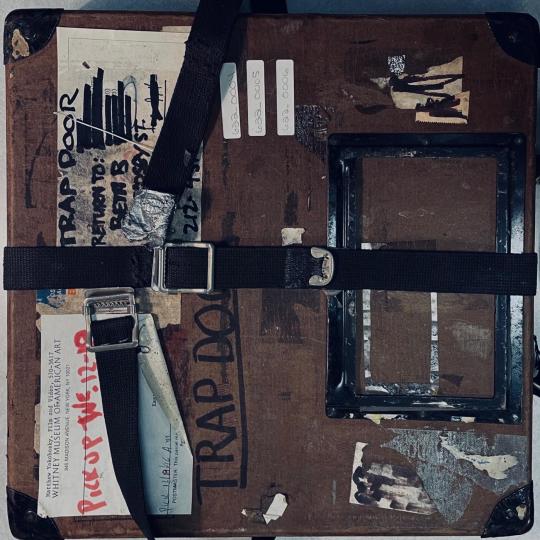
‘Trap Door’ film reel storage case.
The films in the Beth B collection were found to be in generally good condition, and minor preservation interventions included the removal of tape residue and splicing of new labeled extensions onto the existing head and tail leader. The copy of Un Chant d’Amour, now upwards of 70 years old and suffering more from the effects of deacetylation in contrast the Beth B films, is a good reminder of the importance of consistent low humidity, low-temperature storage in prolonging the life of acetate-based films, just the kind that these films will receive in their new home at NYU.
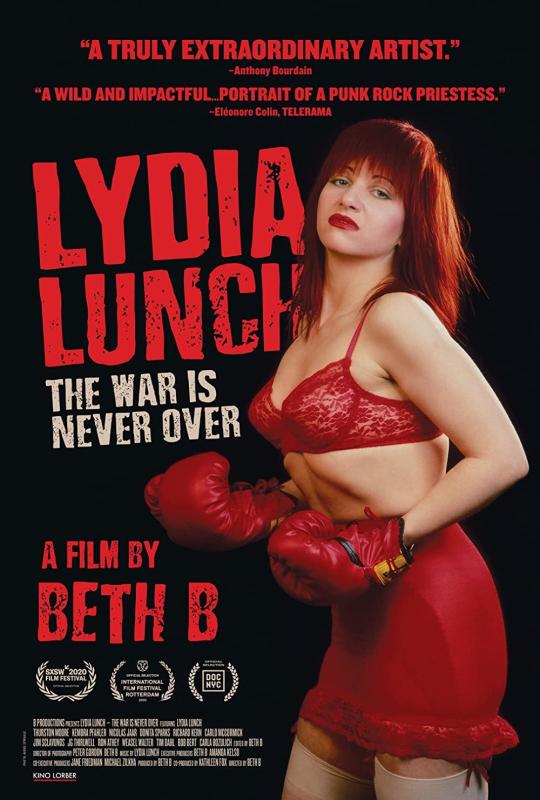
Film Poster for ‘Lydia Lunch: The War is Never Over’
12 notes
·
View notes
Text
Go Violets!: The History & Conservation of NYU's Yearbook Collection
youtube
In celebration of Preservation Week 2024, the NYU Libraries' Barbara Goldsmith Preservation and Conservation Department hosted a virtual presentation exploring NYU Libraries’ extensive yearbook collection. The collection contains almost 1000 yearbooks dating from 1887 to 2012 issued by New York University and its component schools. It is one of the most heavily used collections in the New York University Archives. University In this video, archivist Janet Bunde discusses the history and use of the collection, and Special Collections Conservator Dawn Mankowski discusses conservation treatment and her recent survey of the collection that will be used to guide our preservation priorities and ensure continued access to this important record of NYU history.
Collection Information: https://findingaids.library.nyu.edu/a...
Janet Bunde (she/her) is the University Archivist in the Special Collections Department at NYU Libraries where she is dedicated to the stewardship and preservation of the collections. Janet holds a BA in history with a concentration in peace and conflict studies from Haverford College, and an MA in history with a certificate in archival administration from New York University.
Dawn Mankowski (she/her) is a Special Collections Conservator in the Barbara Goldsmith Preservation & Conservation Department at NYU Libraries where she cares for and carries out conservation treatment on NYU’s library and archival collections. Dawn holds a BA in Art History and Anthropology from the University of Arizona, and an MA in the Conservation of Art from SUNY Buffalo State College, specializing in Library and Archives Conservation.
#nyu#conservation#preservation#nyulibraries#libraryconservation#collectionscare#bookconservation#preservingthepast
1 note
·
View note
Text
Happy Preservation Week! (Part 3 :)
Hello again, and Happy Preservation Week, everyone!
This is Part 3 of our Preservation Week 2021 blog series, if you missed Part 1 or Part 2, feel free to check them out first!
Not long after I finished treating my set of 1891 publisher’s bindings (see Part 2), I had the chance to conserve/preserve one of their Renaissance ancestors. The little book shown in Photos 1-2 is a 1541 Latin translation of a text by Aristotle, and its parchment cover is an example of 16th century recycling!

This type of binding is a “limp vellum” laced-in case, and it was made from a sheet of parchment that someone had previously used to sketch architectural columns (see Photos 3-4.)
In Photo 3, if you turn your head sideways, you can see the base of a column near the bottom left corner, and on the right side, near the spine, you can see a drawing of a Corinthian column. These drawings are difficult to see under normal lighting conditions, but the ink (probably iron gall ink) shows up very well under UV. The recycled parchment binding was probably very flexible when the book was bound, but today the cover is stiff and difficult to open. As you can see, it has also detached from the text, and it functions more like a protective folder than a book cover. Apart from this obvious structural problem, the book is in relatively good condition, and I took a minimally-invasive approach to treating it, under the supervision of Lou Di Gennaro, Special Collections Conservator.

I began by adding a few teeny tiny spine linings between the raised bands on the spine of the text block. The book originally had a pair of parchment spine linings, but these are still attached to the parchment text: in Photo 2, a pair of horizontal strips of parchment span the fold in the parchment case. These two strips of parchment were adhered to the back of the text, and this was the main attachment point between the text and the parchment covers. The text could still be handled and read without its original spine linings, but it was more vulnerable to damage (especially because the spine's loops of sewing thread kept trying to slip off the raised bands!) We decided to apply small strips of Japanese long-fibered kozo paper between the raised bands (Photo 5). I applied these with wheat starch paste (Photo 6) and when they had dried they provided a measure of almost-invisible strength to the spine.

After the spine was consolidated with kozo paper, we considered how to address the binding. It would have been very satisfying to reattach the parchment case to the text... it was clear that this approach would have caused even more damage to the book eventually, though, because of the force that would be required to open it. Fifty or more years ago, conservators might have taken the text apart, washed all of the pages, resewn the book, and given it a brand new parchment cover. In the past, this was considered the best way to preserve a 480-year-old book, but today, most conservators agree that it’s better to preserve these books in their current condition, as much as possible. We decided to leave the parchment cover separate from the text, and to allow it to continue functioning as a protective wrapper. The only difficulty with this decision was that the inside of the parchment cover had several sharp edges that were scratching the outermost pages. Most books have a few blank pages at the beginning and end of the text (“endleaves”), because the first and last pages are very vulnerable to damage. This little book didn’t have any sacrificial endleaves, so we decided to add some (Photos 7-8).

I chose a modern paper of a similar weight and color, and I folded two pieces of it to create a pair of endleaves at both the front and back of the book. Using wheat starch paste, I adhered the folds to the very edge of the first and last pages. The new endleaves look a little too clean when compared to the original paper, but they will protect the first and last pages from abrasion. They can easily be removed from the book later, if another conservator disagrees with this approach, and believe me, there is a long tradition of conservators questioning the decisions of their predecessors! Finally, I created a custom-fit preservation enclosure for the book (Photos 9-10).
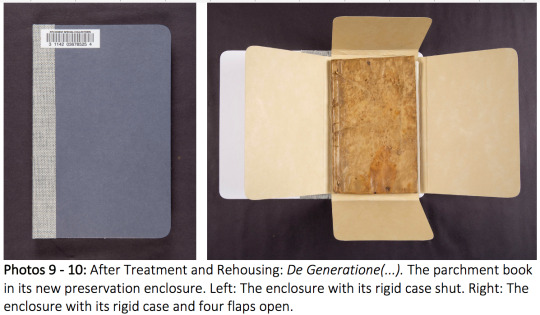
This 4-flap wrapper with a rigid outer case will protect the book from light damage, dust, and abrasion, and it’s always better to slap a barcode on the enclosure than on the rare book itself! Additionally, this wrapper will buffer the parchment from fluctuations in temperature and humidity; parchment can shrink or expand quickly, depending on how dry or humid the air is, and over time these cycles of expansion / contraction can weaken the binding. Again, this treatment involved a bit of “conservation” and “preservation.” The physical alterations that I made to the book were minimal, and these changes are more preventive / functional than aesthetic. The preservation enclosure will make the book look a little less pretty on the shelf, but it’s much safer now!
Thanks for reading, and stay tuned for tomorrow’s installment of our Preservation Week 2021 blog series… I’ll discuss the preservation of a set of 24 unexposed Daguerreotype plates and the wooden box that they were purchased in (see photos below!)
-Cat Stephens
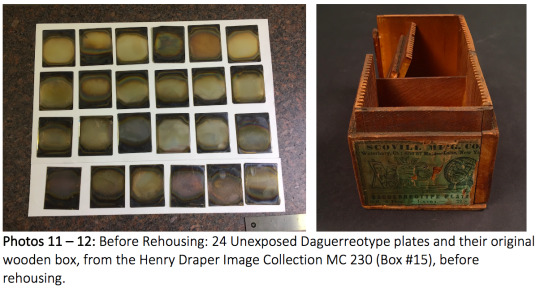
#PreservationWeek#Preservation#Conservation#Libraries#SpecialCollections#TodayInTheLab#NYU#NYULibraries#AmericanLibraryAssociation#ALA#NYUIFA
24 notes
·
View notes
Text
Happy Preservation Week! (Part 1 :)
Happy Preservation Week, everyone!
I’m Cat Stephens, an Andrew W. Mellon Fellow studying Library & Archive Conservation at NYU’s Institute of Fine Arts. At the IFA, I’m earning an MA in the History of Art and Archaeology, and an MS in the Conservation of Historic and Artistic Works, specifically in the conservation of books, paper objects, and photographs.

Students in my graduate program have the option to spend their year-long graduate internships almost anywhere in the world, but I chose to stick around and intern at the NYU Libraries’ Barbara Goldsmith Preservation & Conservation Department... In addition to being awesome at their jobs, the conservators here are excellent teachers, and I’ve always been impressed by the range and volume of treatments that they perform every year! Additionally, NYU has done an impressive job of reducing the spread of Covid-19 on campus, and I feel very lucky that my internship was not severely impacted by the University’s precautionary measures. Since September 2020, the library’s preservation staff and I have had the option to work in the library for 2-4 days every week, and we catch up on paperwork during our teleworking days.
Over the last seven months I’ve worked on many treatments that have helped me understand the finer points of library preservation, and I’ll describe four of my favorite preservation/conservation treatments for you over the next four days. These treatments include a 19th century publisher’s binding, a 16th century book bound in recycled parchment, a wooden box full of unexposed Daguerreotype plates, and ... a skateboard??
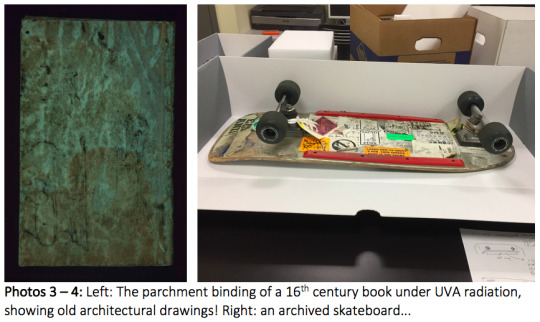
But first, unless you’re a library or museum professional, you may be wondering what Preservation Week is, and how does “preservation” differ from “conservation?” For cultural heritage institutions, Preservation Week is a yearly opportunity to draw public attention to the importance of preserving cultural heritage materials of all kinds. These materials may include modern books, medieval manuscripts, audio/visual materials like VHS tapes and home movies, photographs, scrapbooks, textiles, digital data, paper documents, and metal, wood or glass objects, just to name a few. Many of these materials are held in libraries and museums for public enjoyment, but perhaps many more are sitting in our basements and attics! If you have special things at home that you want to preserve, there are many online resources available to you, and I’ve provided links to some of them at the end of this post.
For conservators and other preservation professionals, Preservation Week is a good time to consider the enormous range of objects that we’re tasked with caring for, and to think about new ways to preserve and conserve them for the next generations. In libraries and museums, “preservation” and “conservation” refer to slightly different activities, but they both contribute to the wellbeing of cultural heritage objects. “Conservation” refers to any physical interventions performed on an object, such as cleaning, making repairs, or compensating for parts that have been lost. A conservation treatment can reduce the stains in a flood-damaged drawing, or it can transform a pile of ceramic sherds back into an ancient vase. “Preservation” usually encompasses the activities performed around an object which will minimize the object’s chemical and physical deterioration over time. Preservation activities include the making of enclosures to protect objects from physical harm, dust, or light damage, the management of pests, and the careful control of temperature and humidity in storage facilities. Preservation and conservation are two sides of the same coin, and many argue that “preservation” is the broader term which includes conservation activities. This point of view is often held in libraries, where the objects (usually books) are not just static relics of the past, they are vehicles of information; to access this information, books must be handled, and they must be able perform a kinetic function. For this reason, any conservation treatment that restores functionality to a broken book can also be considered “preservation.” Of course, many old or rare books have been digitized and made available online, but even so, scholars often want to verify and augment their online research by perusing the original book… there’s no digital substitute for the real thing :)
Thanks so much for reading, and stay tuned for tomorrow’s installment of our Preservation Week 2021 blog series, where I’ll discuss the conservation of a novel published in 1891 (photos below!)
-Cat Stephens
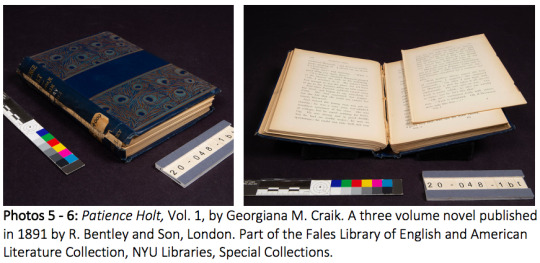
Some At-Home* Preservation Resources:
American Institute for Conservation (AIC): “Caring for Your Treasures”
American Library Association: “Saving Your Stuff”
FEMA (Federal Emergency Management Agency): “Salvaging Water-Damaged Family Valuables and Heirlooms” ... (Fact Sheets are available in English, Chinese, Vietnamese, Haitian Creole, Portuguese, and Spanish):
Minnesota Historical Society: Preserving “Clothing and Textiles”
National Archives: “How to Preserve Family Archives (Papers and Photographs)”
*But sometimes a problem is so complex that it requires a conservator… AIC’s “Find a Conservator” tool can help! https://www.culturalheritage.org/about-conservation/find-a-conservator
#PreservationWeek#Preservation#Conservation#Libraries#SpecialCollections#TodayInTheLab#NYU#NYULibraries#AmericanLibraryAssociation#ALA#NYUIFA
21 notes
·
View notes
Text
Happy Preservation Week! (Part 5 :)
Hello again, and Happy Preservation Week, everyone!
This is the 5th and final installment of our Preservation Week 2021 blog series, if you missed Part 1, Part 2, Part 3 or Part 4, feel free to check them out first!
In our previous post (Part 4), I described the preservation of a set of unexposed Daguerreotype plates and the original wooden box they were issued in. For those objects, I made an (admittedly) complex preservation enclosure that will keep everything safe in storage, but it might be a little confusing to the next person who opens the box. Sometimes it’s hard to make a simple, easy to use preservation enclosure… you find yourself making a series of “simple” decisions that snowball into something complex and baffling!
In this, our final Preservation Week post, I’ll discuss a preservation enclosure that needed to fulfill a lot of different requirements, and the object that it houses is one which I never expected to find in a library! This object is part of the Outpunk Archive at NYU, which contains materials from 1989-1998 relating to Outpunk (both the zine and the queercore music label). While most of the collection consists of papers, photographs, and music recordings, there are also several T-shirts and ...a skateboard!

Apparently, a member of the Riot Grrrl movement owned and adorned this skateboard: one half of the top of the board is spray painted white, and the words “FIGHT HOMOPHOBIA” are spray painted in orange on the other half (Photo 1). Lots of stickers, self-adhesive labels and zine-style xeroxed drawings are pasted to the bottom surface of the board (Photo 2). This person probably lived in San Francisco in the late 1990’s, because one drawing asserts that “The Mission Bay Project SUCKS!” (Photo 3).
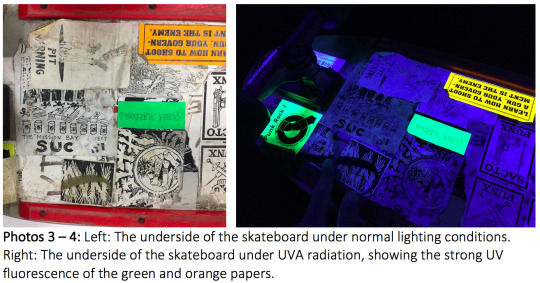
A few of the papers are bright yellow, orange or green, and these glow brightly under UV, suggesting that the papers contain daylight fluorescent pigments (Photo 4). These pigments look unusually bright in sunlight because they absorb UV radiation and reflect it back to the eye as visible light. While we were examining the top of the board under UV, we found yet another message hidden beneath the white paint... at one point, the owner of this skateboard believed that “FASHION IS A SCAM”, but she later decided to paint over this message (Photos 5-6).
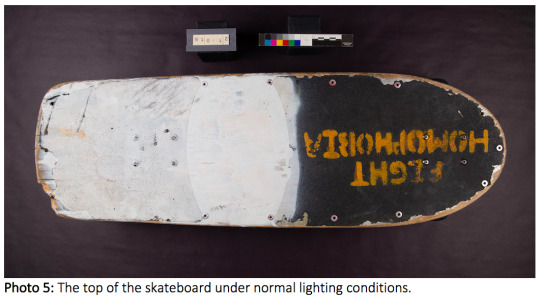

So... why the heck was this skateboard in the conservation lab? Well, it’s a lot bulkier than the average library book, and since the wheels work perfectly we couldn’t just leave it on a shelf! We needed to give the skateboard a preservation enclosure to keep it from rolling around in the stacks, or being mistaken for an NYU student’s property. Most of all, we wanted to give the skateboard a preservation enclosure to prevent its minor damage from getting worse: the plywood board is cracked and splintering at one corner, the sandpapery grip tape is flaking off around the edges, and most of the stickers and drawings are torn and/or curling. We briefly discussed whether we should perform a little conservation work to stabilize these parts of the board; in the end, we decided that we didn’t want to obscure evidence of the skateboard’s use, and everything was stable enough to withstand gentle handling. ...Some may be thinking, “COME ON, it’s a skateboard! This is ridiculous.” To that I say, it’s part of an archive now! We have to treat it carefully, so it lasts a long time. :)
The library’s curators are interested in showing this skateboard during classes, and it’s possible that the object will be requested frequently in the Special Collections reading rooms. As you may recall, the main purpose of my Daguerreotype enclosure was to keep all of the components safe during storage and transit, but the skateboard’s enclosure needed to fulfill two additional requirements: it needed to be simple enough for anyone to unpack/repack easily, and because the skateboard is double-sided, the enclosure needed to function as a double-sided display mount. Under the supervision of Jessica Pace, Preventive Conservator, I created a simple preservation enclosure that would protect the skateboard and allow the curators to safely display either side.

We started by ordering a custom archival box with a drop-wall, which allows you to remove a bulky object more easily (Photo 7). Because the skateboard is a bit heavy and awkward, I also made a handling tray from cross-laminated sheets of archival corrugated cardboard. This tray (Photo 8) allows you to pull the skateboard out of the box, rather than lifting it. I also adhered strips of corrugated board to the bottom of the tray which adds a little more rigidity and allows for air-flow underneath when the tray is pulled out of the box. We decided it was best to store the skateboard wheels-down, so we had to find a way to prevent it from moving around in the box, or rolling off a table. Jessica thought it would be easiest to create bumpers on either side of the wheels, so I experimented with pieces of “Ethafoam” (low-density polyethylene foam, Photo 7). I cut four narrow strips of Ethafoam, and I wrapped them in a sheet of Tyvek fabric to prevent the foam from shedding bits of plastic inside the box. I used low-melt glue to adhere the foam to the handling tray, and I attached a pair of cotton pull-tabs to either side of the tray, to help people remove it from the box. The foam bumpers not only keep the skateboard stationary, but they can function as a display mount when someone wants to see the underside of the board. You can see the final enclosure in Photos 9-10, below:

Again, this was purely a preservation treatment, because the skateboard is in fairly good condition, despite minor damage. We chose not to repair this damage because it reflects the owner’s use of the skateboard, and the damage is not yet severe enough to threaten the object’s structural integrity. This simple preservation enclosure will prolong the life of the object and allow for conservation treatment in the future, if that becomes necessary. It may seem a little strange to treat this 20-year-old skateboard as though it were an ancient relic! I’ll admit, there were times when it felt a little absurd to apply my book and paper conservation skills to an object that (on the surface) looks like nothing special. If all goes well, however, the skateboard will survive for as long as the Daguerreotype plates or the 16th century parchment book... if so, the skateboard will teach future generations about late 20th century feminism and politics, queer history, punk rock, and alternative transportation!
Thank you so much for reading about our preservation activities at NYU Libraries this week, and thank you for supporting your local libraries!
Happy Preservation Week,
-Cat Stephens
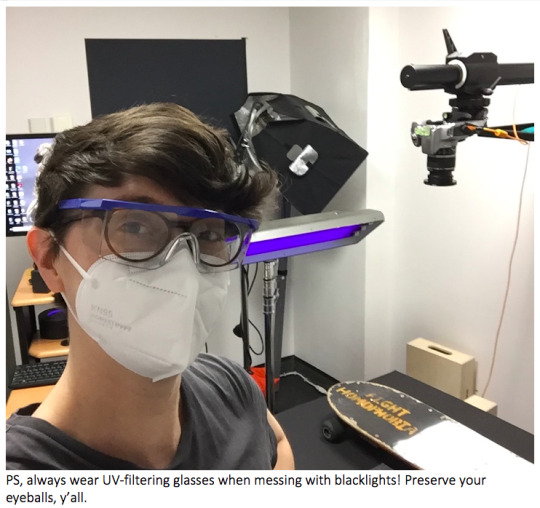
#PreservationWeek#Preservation#Conservation#Libraries#SpecialCollections#TodayInTheLab#NYU#NYULibraries#AmericanLibraryAssociation#ALA#NYUIFA
14 notes
·
View notes
Text
Happy Preservation Week! (Part 2 :)
Hello again, and Happy Preservation Week, everyone!
This is Part 2 of our Preservation Week 2021 blog series. If you missed Part 1, feel free to check it out first!
As I mentioned yesterday, “preservation” and “conservation” refer to slightly different activities in libraries and museums, but they both aim to prolong the lives of cultural heritage objects. Often, a conservation treatment can also qualify as a preventive measure (aka preservation), especially when the treatment reunites detached elements or returns a kinetic object (like a rare book) to a functioning state. This return to functionality preserves access to the text, which is especially important for out-of-print books, and those that haven’t been digitized yet. For example, the book shown in the photos below couldn’t be handled or read safely, because parts of it were broken, detached, and in danger of being lost:
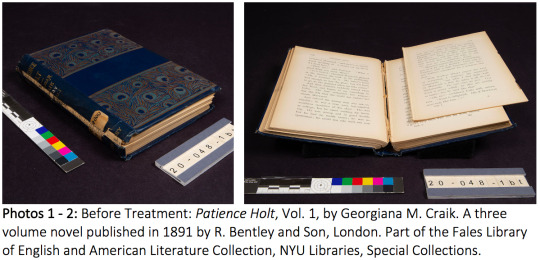
This book is an example of a late 19th century publisher’s binding, and unfortunately, these colorful, mass-produced books are usually very fragile today. Publisher’s bindings were made to look attractive without being very expensive, so they were often produced using cheap, poor quality materials. For fragile books like this, damage usually occurs at the spine, because this area absorbs most of the physical stress imparted by reading. The damage shown in these pictures is commonly seen with 19th century publisher’s bindings: the spine cloth is brittle and torn in several places (Photo 1), and the sewing is breaking, resulting in the detachment of several pages (Photo 2). Ironically, this particular book may have been damaged by photocopying or by the process of microfilming, an outdated preservation technique that was popular in libraries until the advent of digital imaging. The simplest way to preserve this book might be to give it a custom-fitted box, which would protect the book from further harm and would hold all of the fragments together. Another way to preserve a book is to repair the damage and restore its function, in other words, to conserve it!
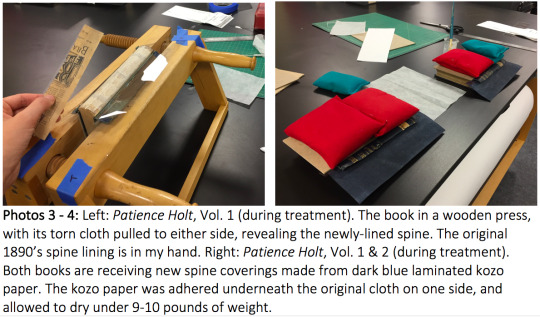
Under the supervision of Dawn Mankowski, Special Collections Conservator, I began conserving this book by carefully removing the book’s original spine lining, a piece of printed waste paper that was probably cut from an 1890’s magazine (Photo 3). This is much easier to do when the spine cloth is already torn! I put this interesting scrap aside, and I strengthened the spine with a new, stronger lining of Japanese long-fibered kozo paper (Photo 3). Next I took the detached pages and resewed them into the book, through the newly-strengthened spine. I then adhered the spine’s original printed waste lining on top of the work I had done, to ensure that none of the book’s original material was lost. Now that the structural work on the spine was finished, I could tackle the main aesthetic problem: the torn spine cloth. I laminated two sheets of kozo paper to make a thicker and stronger sheet, and I toned this laminated sheet dark blue with watered-down acrylics. I gently lifted the cloth away from the board joints and I adhered my blue kozo paper underneath the cloth on one side of the book (Photo 4). After the adhesive was dry, I molded the kozo paper around the curved spine and adhered it underneath the cloth on the other side of the book. I then adhered the original cloth fragments on top of the blue kozo paper, which acts as an invisible bridge underneath the torn cloth. Now the book can be handled and read without fear of exacerbating the old damage.

This was obviously a “conservation” treatment, because it involved a relatively invasive physical intervention to repair prior damage. This treatment has a significant element of “preservation” however, because all of the book’s original material was secured against loss, and the book’s kinetic function was restored, ensuring the preservation of the text. (Of course, another copy of the novel has been digitized and is available for free online, but you get the idea!) Throughout this process, I used water-based adhesives like methylcellulose and wheat starch paste, so that my work can be undone or redone by another conservator in the future. In book and paper conservation, we try to avoid synthetic adhesives like polyvinyl acetate (PVAc) as much as possible, because these tenacious glues are very difficult to remove. When we decide to conserve an object, we always strive for “reversibility” (or, more realistically, “re-treatability”) just in case our repairs fail or they cause unexpected harm to an object. Although it’s impossible to completely reverse the damage that occurred to this book over the course of 130 years, I have hopefully prevented the damage from worsening!
Thanks for reading, and stay tuned for tomorrow’s installment of our Preservation Week 2021 blog series: I’ll discuss the conservation/preservation of a book published in 1541, bound in recycled parchment (see photos below!)
-Cat Stephens
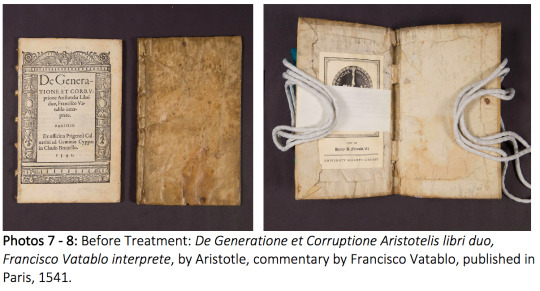
#PreservationWeek#Preservation#Conservation#Libraries#SpecialCollections#TodayInTheLab#NYU#NYULibraries#AmericanLibraryAssociation#ALA#NYUIFA
7 notes
·
View notes